PU leather is a faux leather (synthetic leather) made from a plastic coating on fabric. It mimics genuine hide without using animal skins. This material often appears in furniture, clothing, bags, shoes and auto interiors because it looks like leather and stays affordable. Many people ask “What is PU leather?” or want to know the difference between PU vs real leather or PU vs PVC leather. They also wonder about its durability, lifespan, and whether it is truly vegan or eco-friendly. In this guide we explain what PU leather is, compare it to other leathers, and cover related topics like water-based PU leather, eco PU leather, cleaning and care, plus new plant-based alternatives.
PU leather is essentially a polyurethane (PU) layer bonded to a cloth backing. The grain is embossed to look like animal hide, and a pigmented surface gives it color. In many cases it is lighter than real leather and can resist moisture and sunlight better, but it is not as tough. PU leather is sometimes called “vegetarian leather” or vegan leather because no animal is used in its production. By contrast, genuine leather comes from animal hides. Cost of PU leather much less than real leather, making it a popular budget-friendly choice.
Manufacturers can add features like water-repellence or extra texture. There are even water-based PU leathers made with water solvents to cut toxic emissions. And some brands market eco PU leather made with bio-derived polyols or recycled content. Overall, PU leather provides a consistent look (it does not change much with age), while real leather develops a patina over time.
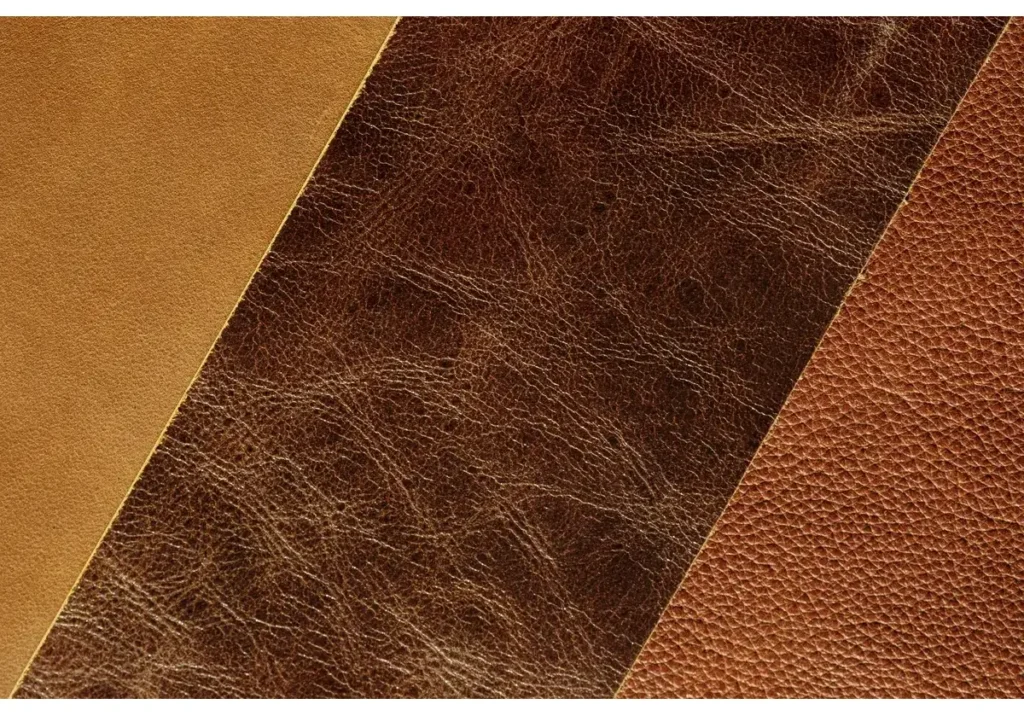
PU (polyurethane) leather is not actually leather at all, but a faux leather. It consists of a layer of polyurethane plastic applied over a fabric base (often polyester or cotton). This creates a material that looks like leather grain, yet comes from petroleum-based polymers. Some products combine PU coating with real split leather underneath; this is known as bicast (double-cast) leather. In bicast leather, a cheap suede or split leather layer is embossed with a PU surface, so manufacturers can label it as “leather” even though much of it is synthetic.
PU leather often mimics the texture of top-grain leather. It can be embossed to show pores and graining. However, typical PU has a flat, even finish and tends to be more uniform than real hide. Being plastic-based, PU leather does not stretch or shrink like animal skin. It also feels slightly different: genuine leather gets softer and warmer with touch, whereas PU feels cool and slightly rubbery in comparison. In terms of weight, PU leather is usually lighter than animal leather. It is also generally cheaper to produce and buy.
Compared with real leather, PU leather has some trade-offs. It does not develop the natural patina and unique character that high-quality leather gains with age. Instead, PU stays about the same through its life. Because it is man-made, PU leather can come in a wider array of colors, textures, and patterns (even fake reptile or stingray finishes). It can also be produced in consistent batches without the flaws or color variation you find in natural hides.
On the other hand, PU leather is more prone to wear. It often comes with only a thin polyurethane coating; once that wears through, the fabric underneath can show. Genuine leather, even if split or protected, tends to stay intact longer under heavy use. In practice, low-quality PU may peel, crack or flake after just a year or two, especially in high-friction areas. Better-made PU leather (with strong lamination and finish) can last longer. In fact, with careful pu leather maintenance a PU item might hold up for 5–10 years, but often it will show wear sooner. We explore durability in more detail below.
PU Leather vs. PUCoated vs. Bicast Leather: It helps to know terminology. “PU leather” often means the entire product is synthetic. A “PU-coated” or bicast product, by contrast, uses a real leather base. In bicast leather, the inside hide of a cow (split leather) is covered with a thick PU layer on top. Bicast leather looks like leather on the outside but will behave more like plastic on the inside. It is common in some furniture and shoe goods. Always check labels: a piece marketed as “genuine leather” might actually have a PU veneer on split hide.
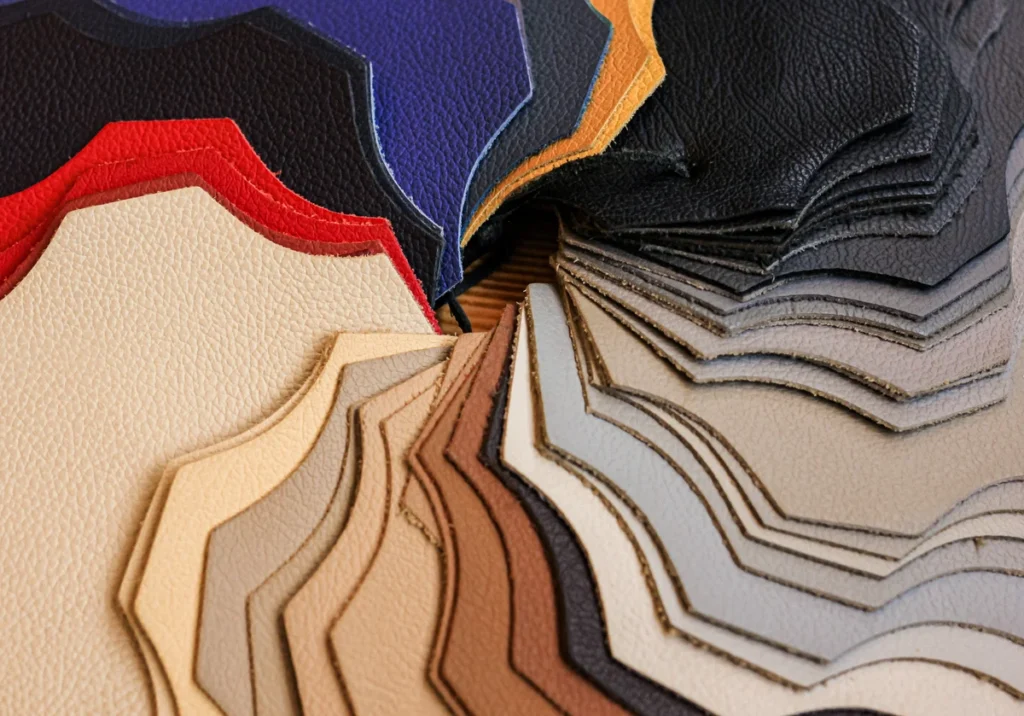
The basic steps to make PU leather are straightforward:
Because manufacturers control each step, they can ensure consistency. Every yard of PU leather from the same production run looks nearly identical. That consistency is a selling point for businesses making large products (like auto upholstery) where uniformity matters. In contrast, real leather hides always have natural differences in shade or grain.
PU leather sometimes incorporates foamed layers to feel softer and thicker. Imagine a thin layer of plastic with bubbles inside, making it springy. This technique gives PU leather a padded, leather-like feel in some cases. It can also make it more flexible. Of course, adding foam means even more plastic content and a thicker overall material.
In short, PU leather is a fully man-made composite – combining fabrics, plastics, and synthetic additives. Its production relies on modern chemical processing. The end product is durable, cheaper than top-grain leather, and highly customizable in appearance.
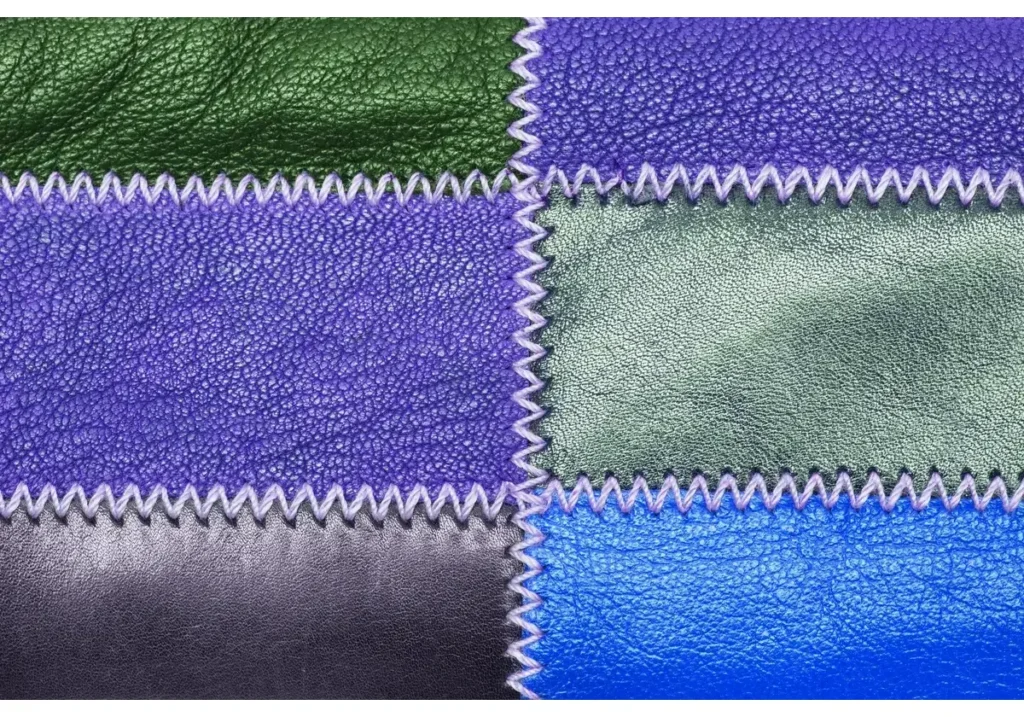
Many shoppers wonder “PU vs real leather” and “PU vs PVC leather”. Real leather comes from animal hides, so it has natural pores and fibers. PU leather is fully synthetic, and PVC leather is another plastic substitute made from vinyl.
Breathability and Feel: Real leather is breathable due to its open pores; it adjusts to body temperature and can feel warm to the touch. PU leather is less breathable than real leather (though more so than PVC), because the polyurethane layer limits air flow. PVC leather (vinyl) is the least breathable – it usually has a foam backing and completely seals the surface. For clothing and seating, breathability matters: PU leather jackets or car seats feel more comfortable than PVC/vinyl ones on hot days. PU also has a more supple, flexible hand-feel, closer to real leather’s softness.
Durability: In general, PVC leather is tougher than PU. PVC fabrics are made with multiple layers of vinyl that resist scratching, water, and abrasion very well. A good-quality PVC couch can last a long time without cracking (though it might peel instead). PU leather is thinner and more flexible, but that means it usually wears out faster. PU can crack or separate from its backing as the coating ages. Real leather outruns both: a full-grain hide sofa can last decades if cared for, whereas similar-quality PU might only last several years under heavy use.
Stains and Maintenance: PU leather resists liquid better than raw hide because it has a sealed surface. Spills can often be wiped up easily on PU. Real leather, unless properly protected, can absorb oils and dyes. PVC is completely water-impervious, so it never stains, but it is prone to cracking under UV exposure. All three are relatively easy to clean with mild soap and water, but avoid harsh solvents on any leather-type.
Cost: PU leather is a budget-friendly alternative. It is significantly cheaper than genuine leather. PVC leather tends to be priced similar to or slightly cheaper than PU, but often of lower quality feel. Real leather is the most expensive. The lower price of PU leather makes it widespread in furniture and fashion, even though you trade off some longevity for the savings.
Environmental and Health Concerns: PVC leather (vinyl) raises red flags environmentally. Its production involves chlorine and can release dioxins, making it ecologically destructive. PVC is also not biodegradable. PU leather avoids chlorine, but it still uses oil-based plastics and toxic solvents unless specially made (see next sections). Genuine leather uses animals and heavy tanning chemicals (often chromium salts), so it also has a big carbon and water footprint. In summary, each type has pros and cons: PU leather offers a balance of cost and performance, real leather offers long-lasting durability and luxury, while PVC leather offers extreme durability at the expense of breathability and eco-friendliness.
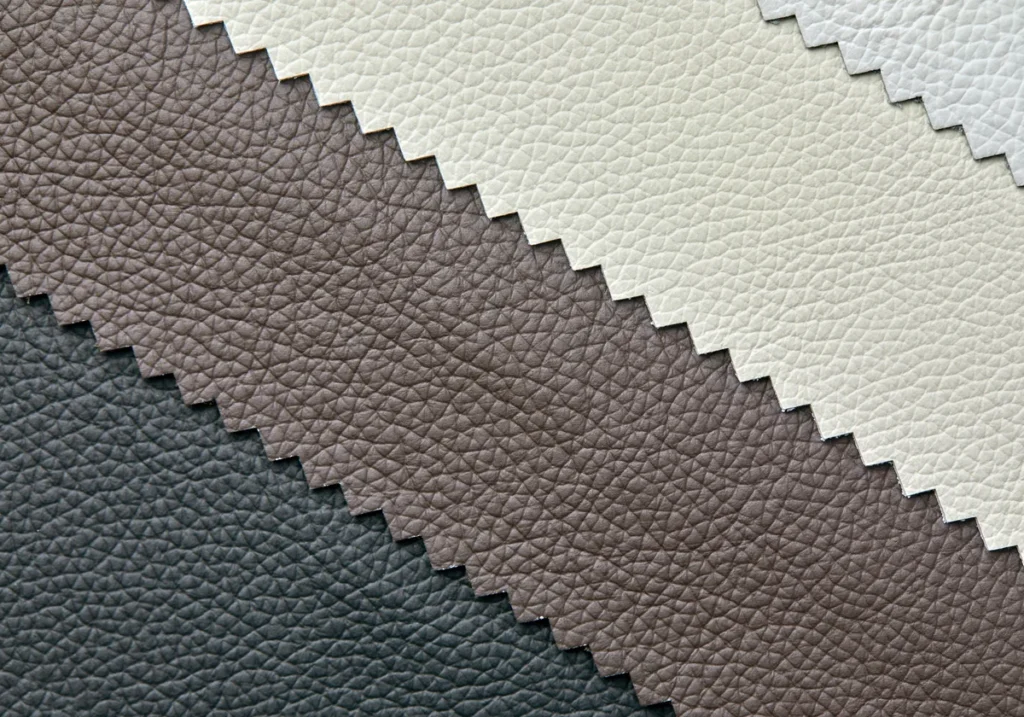
Traditional PU leather manufacturing used volatile organic solvents (like dimethylformamide, DMF) to dissolve the polymer. Modern water-based PU replaces those solvents with water as the main carrier. This has a big benefit: it cuts volatile organic compound (VOC) emissions dramatically. In practical terms, water-based PU products emit far fewer toxic fumes during production and curing. Many companies now label their leatherette as “water-based PU” or “low-VOC PU leather.”
The result is both healthier production and safer handling. For example, one industry guide notes that water-based PU leather “uses water as the primary solvent” which makes the material much less polluting. This means fewer hazardous chemicals in the factory air and waste stream. Yet, the final material still performs like regular PU: it can be molded, dyed, and finished to look like genuine leather. It remains durable and easy to clean, making it suitable for furniture, accessories, and even automotive seats.
So if you see a label for water-based or “solvent-free” PU leather, that indicates a greener production method. However, note that “water-based” addresses the production stage; the end material is still a plastic (polyurethane) product. It is better for the factory emissions but not necessarily biodegradable.
Some manufacturers go further by branding their products as eco-friendly PU or green leather. These leathers may combine one or more sustainable features. For example:
These eco-certified leathers might carry labels like “Oeko-Tex” or “Intertek Green Leaf” to indicate safer chemistry. Water-based PU (discussed above) is a big part of this trend, since it greatly reduces emissions. Still, at the end of the day PU leather remains a synthetic plastic. Even bio-based polyurethanes do not biodegrade easily. They can leave microplastics as they wear. Critics point out that calling it “eco” may be misleading unless the product also addresses end-of-life (recyclability or longevity).
In short, eco PU leather is usually a better production method (less solvent, some recycled or renewable inputs), but the material is still not compostable like plant fibers. It reduces some environmental harm, but one must still deal with disposal of plastic in the end.
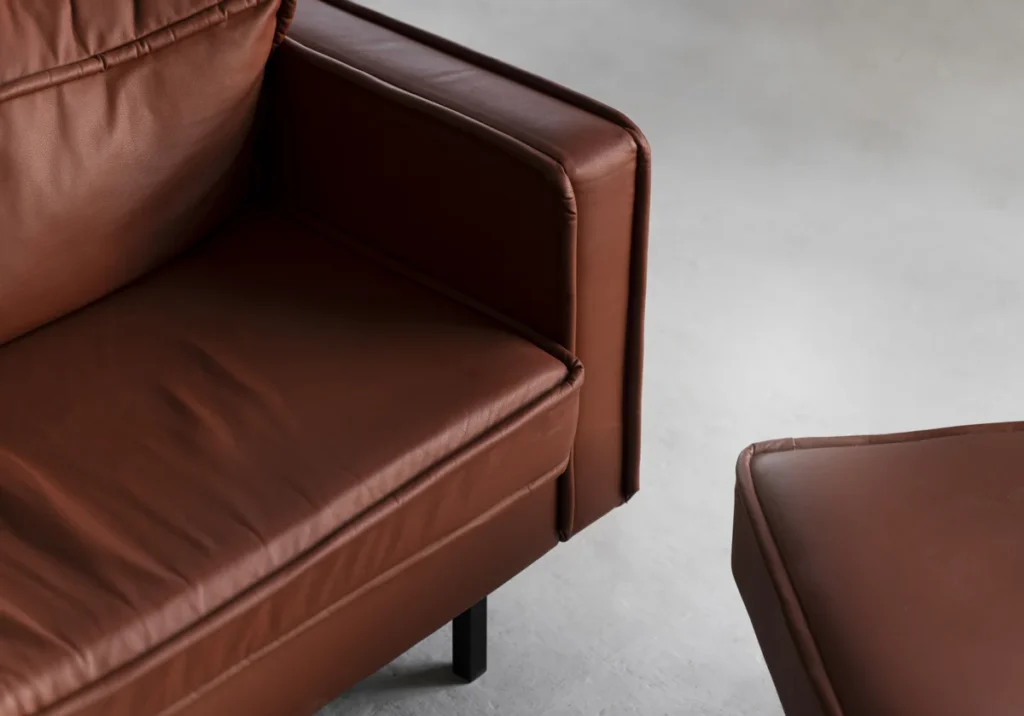
Several people ask is pu leather durable. The answer is simple. When well-made and maintained, PU leather items can last several years, but they generally do not match the longevity of real leather. Industry advice typically puts an upper range of 3–5 years under regular use. In other words, a PU leather couch or handbag will often start to show wear (cracks, peeling) after a few years if used daily. With gentle use, it might last longer. Some sources mention that with proper care high-quality PU leather could last up to 5–10 years.
The key factors affecting lifespan are the product quality, usage, and maintenance. High-grade PU leather is made with better bonding between layers and thicker wear surfaces. Cheaper PU often uses a thinner coating and poorer adhesives, so it can peel within months. How the product is used matters too: a PU sofa in a busy family room or a PU car seat exposed to sun will deteriorate faster than a PU decorative chair or purse used rarely.
Here are some aspects to consider:
In summary, expect PU leather products to maintain their look for about 2–5 years in heavy-use settings, or longer if used lightly and cared for. After that, you may notice cracking along seams or peeling of the surface layer. By contrast, genuine leather (top-grain or full-grain) will typically last much longer if looked after, even decades.
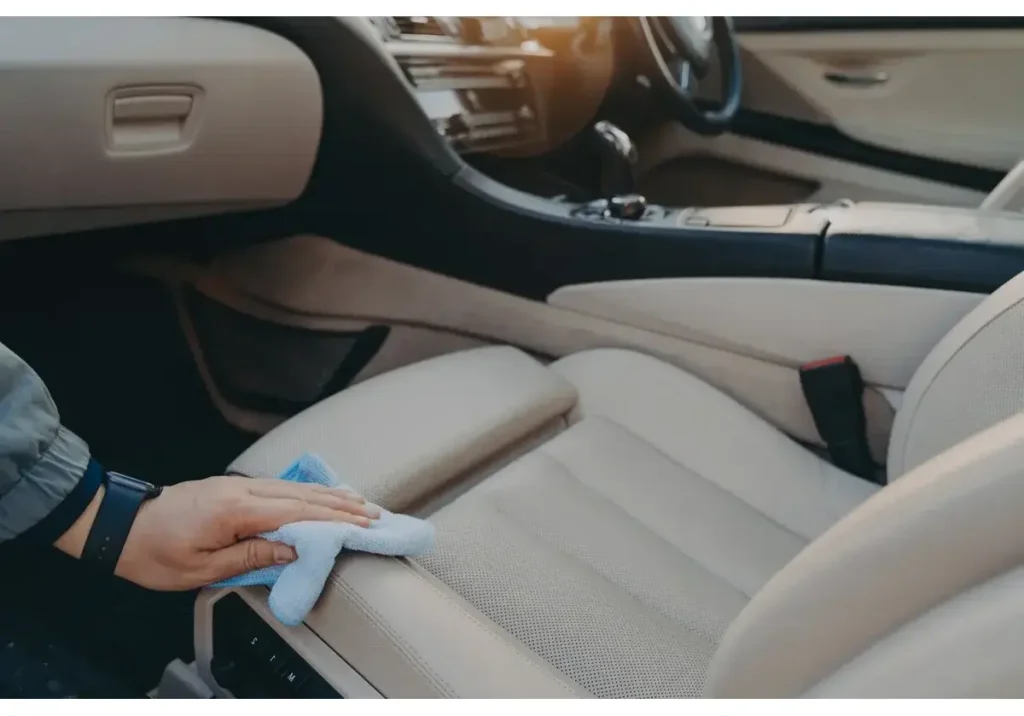
Caring for PU leather is generally straightforward. Its plastic surface means easy cleaning, but you still need to be gentle. Are you wondering how to clean pu leather? Here are some guidelines:
Here’s a simple cleaning checklist:
If PU leather does crack or peel, repairs are tricky. There are faux-leather repair kits that include a flexible filler and color pigments. They can patch small areas (e.g. scratches or tiny cracks) by filling and recoating. However, major damage is often irreparable. In many cases, people simply replace the cover or item when PU wears out. Real leather, by contrast, can often be re-dyed or buffed by professionals, which is harder to do on PU.
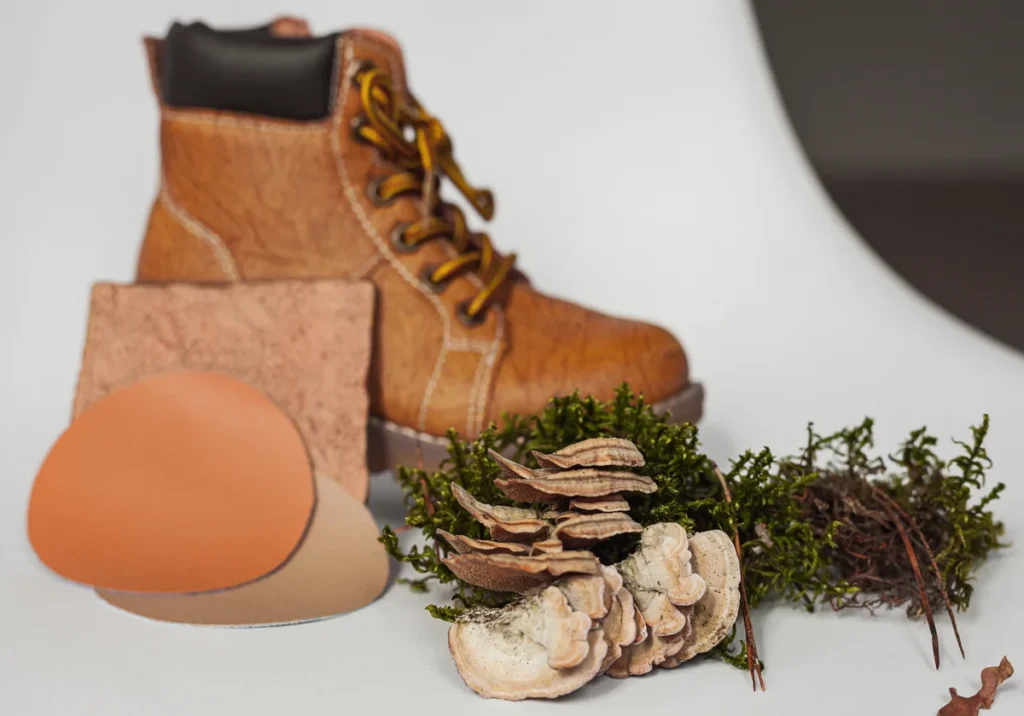
“Vegan leather” often refers to PU or PVC, but a new generation of plant-based leathers is emerging. These materials use botanical or biological feedstocks instead of plastics or hides. Some notable examples include:
These plant leathers aim to remove the harm of both animal farming and plastic-making. According to the World Economic Forum, cactus leather can slash water use tremendously compared to both cowhide and traditional PU. Apple leather’s carbon footprint is much lower too. Their durability can be impressive – for example, Piñatex is quite tough – but expect lifespans that may not yet match premium animal leather. Overall, plant leathers offer new options for those wanting cruelty-free, eco-conscious materials, though they may still contain some resin or polymer binder for strength.
Pineapple leaves and fiber processing: These plants are sources of Piñatex and other plant-based leathers. They provide a cruelty-free, sustainable alternative to both animal leather and PU leather.
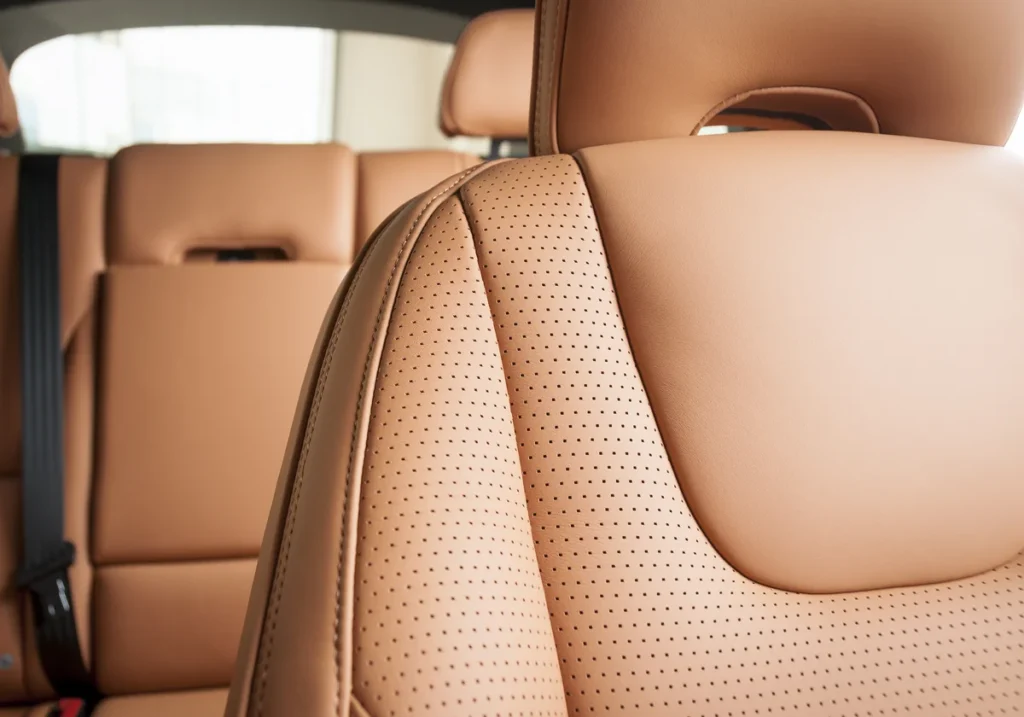
Beyond basic PU, there are high-end synthetic leathers made for premium performance. Two notable brands are Clarino™ and Ultrasuede®.
Clarino leather is a Japanese man-made leather invented in 1964. It is actually a microfiber non-woven fabric (nylon and polypropylene fibers) impregnated with polyurethane. Clarino’s structure is perforated, giving it breathability similar to natural leather. It can simulate both suede and top-grain leather. Unlike normal PU, Clarino remains soft even when wet; it was even used for bicycle saddles and athletic gear because it holds its texture in rain. Shoes, jackets, bags, and even electronic-device covers are often made from Clarino because it feels luxurious and performs well. Its craftsmanship makes it durable, washable, and very leather-like. For example, the soccer ball company Mitre made a football from Clarino fabric.
Ultrasuede is a trademark for a high-end microfiber suede by Toray (similar to Alcantara®). It is typically 80% polyester microfiber, 20% polyurethane, and it mimics the look and feel of natural suede. Ultrasuede is known for being extremely soft, stain-resistant, and easy to care for. It does not shed or pill like suede. It is used in luxury fashion, home decor, and automotive interiors. In fact, Toyota and other car makers use Ultrasuede (often called “synthetic suede” or “microfiber suede”) for headliners and seats because it adds a high-quality feel and is easy to clean. It is also washable, unlike real suede. In comparisons, Ultrasuede often outperforms standard PU leather in durability because of its dense fiber structure.
Both Clarino and Ultrasuede are examples of microfiber leather. They are entirely synthetic but designed for top-tier applications. They cost more than regular PU leather but last longer and feel closer to premium animal leather. Unlike some cheaper PU, they often resist cracking and fading. Essentially, microfiber leathers are the high-performance cousins of PU in the world of leather alternatives.
PU leather finds uses across many industries thanks to its versatility and cost-effectiveness. Here are common applications:
Modern living room with a PU leather sofa: PU leather is commonly used in home and office furniture because it is affordable, stain-resistant, and can mimic the look of high-end leather.
Vintage car interior with PU leather seats: Automakers use PU or ultrasuede for durability and ease of maintenance. For example, many electric and economy cars now feature PU leather seat coverings for a leather-like look without animal hides.
Stack of PU leather handbags in a display: PU leather is heavily used in fashion – for bags, shoes, and apparel – because it can imitate expensive leather at lower cost.
In summary, PU leather’s main advantage is flexibility in manufacturing and design. It can be molded, dyed, and finished at scale. It allows a “leather style” product line without the expense of hides. However, designers and manufacturers must balance appearance with expected product life: expensive goods may still favor real or premium synthetic leathers for longevity, whereas disposable or trend items often use basic PU leather.
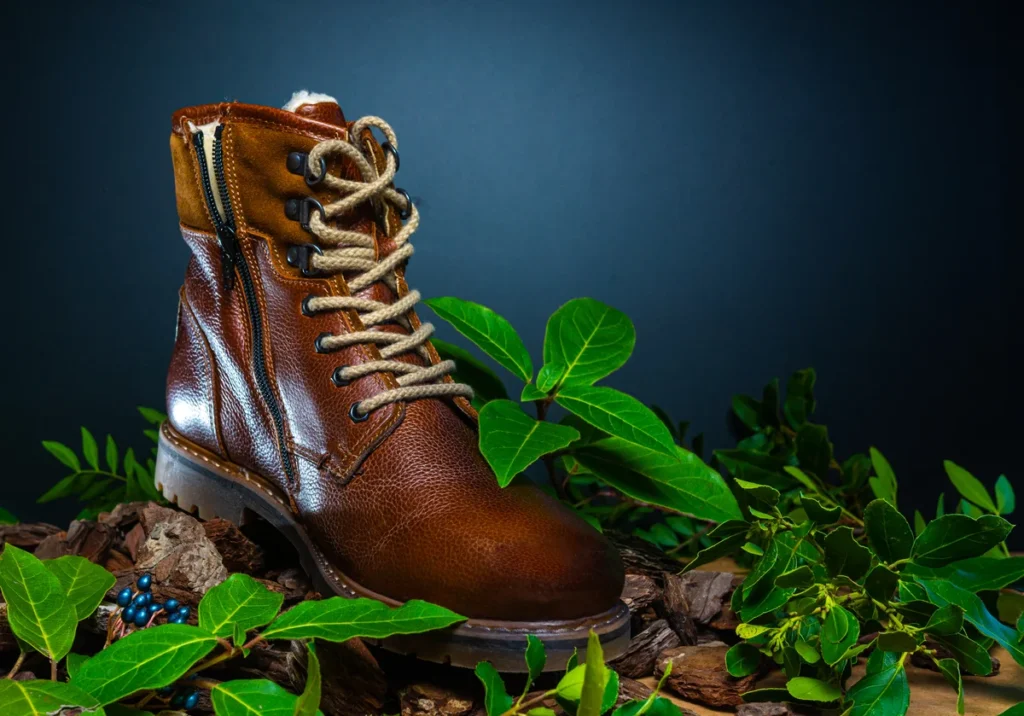
The environmental issues around leather and leather substitutes are complex. Here are key points:
Overall, is PU leather sustainable? Not fully, but it’s often less harmful than real leather when viewed narrowly (less methane, no deforestation for grazing). It’s also generally better than PVC. To improve its footprint, the industry uses water-based processes and low-VOC or solvent-free coatings. If you want the greenest option, consider recycled PU materials (some companies are exploring chemical recycling of polyurethane) or the new bio-fabrics. But at home and work, the best practice is to treat PU leather goods well so they last, and recycle or repurpose them when done rather than tossing them.
PU leather is widely chosen for cost reasons. On average, PU leather costs much less than comparable real leather. This affects everything from sofas to smartphone cases. When budgeting, expect a PU item to be a fraction of the price of a real leather one (sometimes as low as 1/10th the cost). PVC leather is often even cheaper but of lower quality.
However, “cheaper” often signals compromises. Many low-end retailers use very thin PU coatings to cut costs, and these items peel quickly. Here are some buying tips:
It’s also useful to compare with PVC leather if price is key. PVC items are often a bit cheaper than PU, but remember they will feel different (cooler, less flexible) and have more environmental issues.
Cost Comparison (approximate): A real leather sofa might cost $2000+, while a PU leather sofa of similar size could be $500–$1000. A real leather handbag might be $300–$500, versus a PU bag at $30–$100. (Actual prices vary by brand and style, but PU is consistently the more budget option.)
If you’re deciding between real and PU, think about usage. For a temporary or decorative piece, PU leather can provide the look at low cost. For a daily-use item (like a recliner or a winter coat), you might get more long-term value from real leather despite the higher upfront price, thanks to its durability. But for many consumers, PU leather hits the sweet spot of appearance, price, and animal-friendliness.
Q: What exactly is PU leather?
A: PU leather (polyurethane leather) is a man-made material that looks like leather. It is a fabric base coated with polyurethane plastic. Because it contains no animal product, some call it “synthetic leather” or “vegan leather.” Unlike real leather (which is animal hide), PU leather is entirely a plastic product.
Q: Is PU leather the same as “real” or “genuine” leather?
A: No. Genuine leather is the skin of an animal (cow, pig, etc.). PU leather is an artificial substitute. It only imitates the appearance of animal leather. You will often see it labeled “PU leather”, “faux leather”, or “leatherette” to make this clear.
Q: How durable is PU leather?
A: PU leather can be quite durable, but generally less so than real leather. In everyday use, a typical PU item might last around 3–5 years before showing wear. With gentle use and high quality, it might last up to 5–10 years. Real leather, by contrast, often lasts much longer if well cared for.
Q: How do I clean and care for PU leather?
A: Clean PU leather by wiping with a soft, damp cloth. For dirt or spills, use mild soap diluted in water – apply gently, then wipe off. Blot liquids quickly with a dry cloth. Avoid harsh chemicals or alcohol cleaners that can damage the surface. Also keep PU leather out of direct sun and away from heat sources to prevent cracking. A dash of furniture polish meant for vinyl can occasionally restore shine, but it’s not required.
Q: Is PU leather toxic or safe to use?
A: PU leather itself is generally safe for everyday use. However, some people are concerned about the chemicals used in its production. Traditional PU may contain solvent fumes (like DMF) or plasticizers, but water-based PU has reduced these concerns. Once the item is finished, it typically emits no odor or toxins. If poorly made, low-quality PU could release trace chemicals, but this is uncommon in reputable products. Importantly, PU leather does not contain formaldehyde like some bonded leather does, and it doesn’t harbor pathogens (it’s wipe-clean).
Q: What does “water-based PU leather” mean?
A: It means the PU was made using water as the main carrier instead of strong solvents. This significantly cuts down on volatile organic compounds (VOCs) during production. The end product looks and feels like normal PU leather, but it’s made in a cleaner, more eco-friendly way.
Q: What is bicast leather?
A: Bicast (double-cast) leather is a hybrid material. It starts with a real leather split (the inner layer of a hide) and covers it with a thick polyurethane layer. It looks like leather but behaves partly like plastic. It is cheaper than full leather but can peel over time, since the PU layer can detach.
Q: Are there eco-friendly leather options?
A: Yes. Aside from water-based PU (which is eco-friendlier to produce), true plant-based leathers exist (like those from cactus, pineapple, or mushrooms). These use renewable resources and often have much lower water and carbon footprints than animal leather. They may still contain some synthetic resin, but they are a more sustainable choice. Clarino and Ultrasuede (microfiber leathers) are also long-lasting synthetics that avoid animal use. Ultimately, if you want a “greener” option, look for recycled-content PU, plant leathers, or high-durability fibers, and aim to keep your products in use as long as possible
IsItRealLeather began with one goal: to defend and promote authentic leather in a world full of cheap substitutes. We’re not a brand or manufacturer—we are a community-driven resource backed by writers, leather crafters, and passionate consumers from around the world.
Sign up, you’ll love hearing from us. We promise!